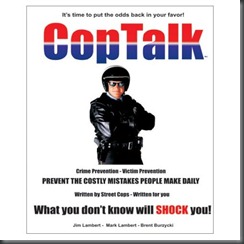4 tips to protect you from ATM thieves
By Constance Gustke • Bankrate.com
Highlights
· "The technology of the bad guy is getting better and better every year."
· Hidden cameras are disguised so they can pick up your password.
· You must report fraud within 60 days to limit your liability.
ATMs are under siege more than ever from skimming. Skimming, where ATM thieves steal your PIN and account number using remote devices, is increasing dramatically. Often done by sophisticated crime rings from the Eastern bloc countries, ATM skimming is becoming a high-tech art that’s hard to detect.
That’s bad news for consumers. Experts say that losses from skimming are approaching $1 billion. Nearly one in five fraud victims reported having their credit card PIN or debit card ATM PIN information stolen in 2009, according to Javelin Strategy & Research. And Robert Vamosi, an analyst handling risk, fraud and security at Javelin, sees ATM skimming continuing to rise this year and next.
"Consumers aren’t aware of ATM tampering," he says. "ATMs have 40 years of trust."
Skimming isn’t new. It’s been around for at least 10 years. What has changed is that the "technology of the bad guy is getting better and better every year," says Robert Siciliano, a security expert based in Boston. "It’s up to consumers to watch their own backs."
Typically, ATM thieves use two devices to capture your PIN and card data. One device sits near where you swipe your card and reads the magnetic stripe on your card with your account number. Even more confusing, the device mimics the card slot. "The technology has evolved to a point where the molded plastic fits like it belongs there," says Siciliano. Devices are even readily available over the Internet for as little as $300.
A camera, hidden from view, captures the PIN. "You can get the data in real time," says Siciliano. "You can be in your car with a laptop remotely accessing the device."
Thieves then burn the data onto a blank card to access your money.
U.S. Secret Service spokesman Max Milien wants consumers to be warned. "The public is notified after an event," he says. And don’t take bank security for granted. Fraud can occur at any bank in any part of the country. Thieves are even sending out false text alerts to get consumer data.
Banks, they say, are slow to adopt anti-skimming measures. When Javelin surveyed 25 banks, four stood out, though, for their anti-theft measures. They are Bank of America, Chase, Citibank and Wells Fargo.
advertisement
Experts add that debit card users are most at risk. Typically, consumers must report fraudulent charges within two days, limiting your liability to $50. If you report ATM skimming fraud within 60 days, you’re liable for the first $500 of any transaction. Siciliano adds that thieves carefully orchestrate ATM withdrawals, maxing out cash withdrawals one day and waiting until after midnight for the next stash, which quickly adds up.
Here are four tips to help you protect your account.
1. Cover your password with your hand
Hidden cameras are disguised so they can pick up your password. By protecting it, ATM thieves can’t access your account.
2. Use familiar ATMs and limit your visits
ATMs in dimly lighted spots or used late at night could be more susceptible to fraud, while ATMs under video surveillance can be safer. Stay away from ATMs at retail stores or restaurants, adds Siciliano. Recently, skimming devices were found on ATMs in a popular grocery store in central Florida. Airports, convenience stores or kiosks are equally vulnerable to ATM thieves. Still, even highly trafficked ATMs outside a bank branch have been targeted by thieves.
Also, try to limit your visits to the ATM. "With frequency, there’s risk," says Siciliano.
3. Check bank balances frequently
Given the two-day window for reporting fraud, it pays to check your account frequently. If you don’t report fraud within 60 days, you have unlimited liability. "Sign up for alerts and notice unusual withdrawals," says Vamosi.
With credit cards there are more protections in place, and you can dispute charges."You have at least a billing cycle," says Siciliano.
4. Observe the ATM
Vamosi cautions consumers to look at an ATM to make sure a card slot is "legitimate and not tacked on." Look for things that strike you, he says. "Some people have felt that when they inserted their card, something went awry," he says. In that case, try another ATM.
When protecting your account against ATM thieves, "it’s all about awareness, paying attention and understanding risks," says Sicilano. "There are 400,000 ATMs and every one of them is susceptible to fraud. The speed and convenience of technology has replaced the security of technology."



Criminals do not seem to take vacations in innovating there cruel ways,we really need to be vigilant these days!